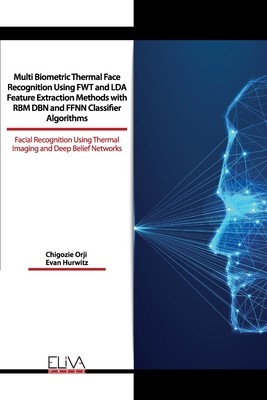| Multi Biometric Thermal Face Recognition Using FWT and LDA Feature Extraction Methods with RBM DBN and FFNN Classifier Algorithms: Facial Recognition Contributor(s): Hurwitz, Evan (Author), Orji, Chigozie (Author) |
|
 |
ISBN: 1636480837 ISBN-13: 9781636480831 Publisher: Eliva Press OUR PRICE: $46.08 Product Type: Paperback Published: January 2021 |
| Additional Information |
| BISAC Categories: - Computers |
| Physical Information: 0.2" H x 6" W x 9" (0.34 lbs) 76 pages |
| Descriptions, Reviews, Etc. |
| Publisher Description: Person recognition using thermal imaging, multi-biometric traits, with groups of feature filters and classifiers, is the subject of this paper. These were used to tackle the problems of biometric systems, such as a change in illumination and spoof attacks. Using a combination of, hard and softbiometric, attributes in thermal facial images. The hard-biometric trait, of the shape of a head, was combined with soft-biometric traits such as the face wearing glasses, face wearing a cap/headgear, face with facial hairs, plain face, female face, and male face. These were experimented with, using images from Carl's database and Terravic Facial Infrared Database, and used to train clusters of neural network algorithms for each biometric trait. These comprised Restricted Boltzmann Machines (RBM), Deep Belief Networks (DBN), and Feed Forward Neural Networks (FFNN). After feature extraction, using Fast Wavelet Transform (FWT), and Linear Discriminant Analysis (LDA). A classification error of 0.02887, 0.038695, 0.02381, 0.024629, 0.0268, 0.02369 and 0.03 was achieved for each biometric trait, respectively. Showing that they had each been learned, and could be used through a fusion method, to improve recognition. This was demonstrated using a test image, as the user, having four of the character traits (countenance, glasses, facial hair, and gender). Then attempting to recognize each trait, one after the other, using a cross-verification method. The algorithm was seen to return test values, close to those received during the training test, for each biometric trait. |